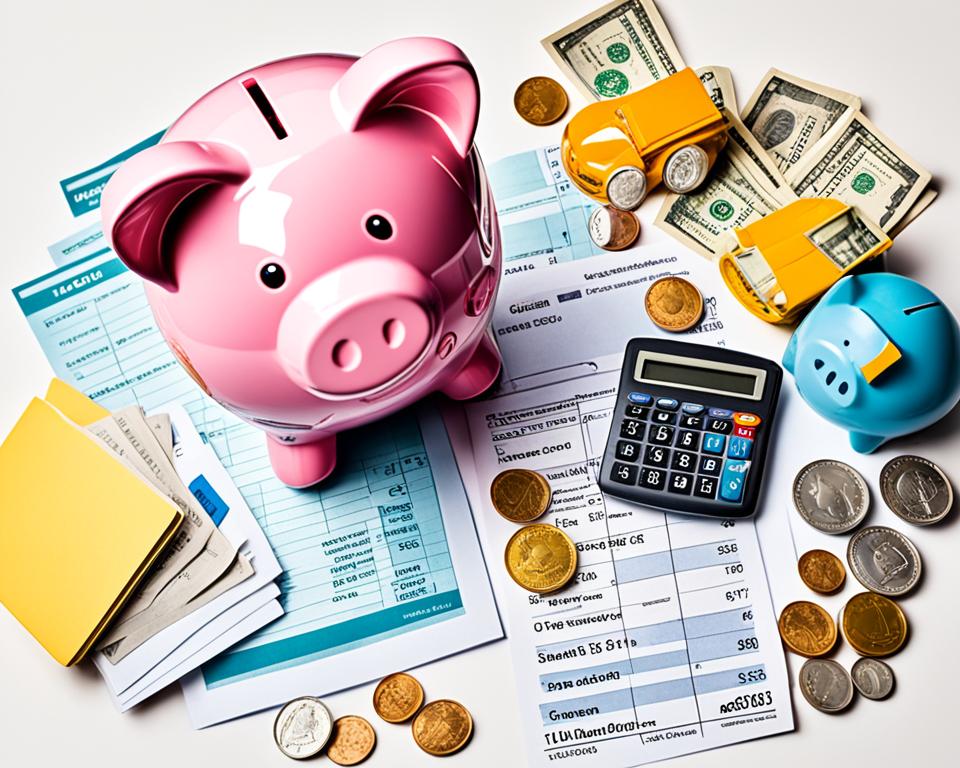Maximize Your Money: 5 Must-Try Personal Finance Programs to Manage Your Finances
Are you tired of struggling with your personal finances? Are you looking for effective tools to help you manage your money better? Look no further!
In this article, we will introduce you to five must-try personal finance programs that will help you maximize your money and take control of your financial life.
Managing your finances can be overwhelming, especially if you’re not sure where to start. But with the right tools, you can simplify the process and make smarter financial decisions. These personal finance programs offer a range of features, from budgeting and expense tracking to investment management and debt payoff strategies. Whether you’re a beginner or a seasoned money manager, these programs will provide you with the tools and insights you need to achieve your financial goals.
We understand that everyone has different needs and preferences when it comes to managing money. That’s why we’ve curated a diverse set of personal finance programs, each with its own unique features and benefits. So, no matter what your financial situation or goals may be, we have a program that will suit your needs.
Don’t let your finances hold you back any longer. Take the first step towards financial freedom by exploring these must-try personal finance programs and start maximizing your money today.
Types of personal finance programs
When it comes to managing your finances, using a personal finance program can provide numerous benefits. These programs offer a variety of features and tools that can help you streamline your financial tasks, gain a better understanding of your spending habits, and make informed financial decisions. Here are some key benefits of using personal finance programs:
1. Simplified Budgeting: Personal finance programs allow you to create and track budgets easily. With these programs, you can set spending limits for different categories, track your expenses, and receive alerts when you exceed your budget. This helps you stay on top of your spending and make adjustments as needed.
2. Expense Tracking: Keeping track of your expenses manually can be time-consuming and prone to errors. Personal finance programs automate this process by linking to your bank accounts and credit cards, automatically categorizing transactions, and providing you with detailed reports. This makes it easier to understand where your money is going and identify areas where you can cut back.
3. Debt Management: If you have multiple debts, personal finance programs can help you manage them more effectively. These programs allow you to input your debts, track your progress, and create a repayment plan. They can also provide insights on the most efficient debt payoff strategies, such as the snowball or avalanche method.
4. Investment Management: Some personal finance programs offer investment tracking and management features. These tools allow you to monitor the performance of your investments, analyze asset allocation, and make informed investment decisions. This can help you optimize your portfolio and work towards your long-term financial goals.
5. Financial Goal Setting: Personal finance programs often include goal-setting features that allow you to define your financial objectives and track your progress. Whether you’re saving for a down payment on a house, planning for retirement, or aiming to pay off your student loans, these programs can help you stay motivated and on track.
Top 5 personal finance programs to try
There are several types of personal finance programs available, each catering to different financial needs. It’s important to understand the different types to determine which program will best suit your requirements. Here are the main types of personal finance programs:
1. Budgeting Apps: Budgeting apps focus primarily on helping you create and manage budgets. These apps typically offer features like expense tracking, income management, and budget categorization. They provide a comprehensive overview of your financial situation and help you stay within your budget limits.
2. Expense Tracking Apps: Expense tracking apps specialize in tracking your expenses and providing detailed reports. They link to your bank accounts and credit cards to automatically categorize transactions, making it easier for you to analyze your spending habits and identify areas where you can save money.
3. Debt Management Tools: Debt management tools are designed to help you pay off your debts efficiently. These tools allow you to input your debts, track your progress, and create a debt repayment plan. They often provide insights on the most effective debt payoff strategies, helping you save money on interest payments.
4. Investment Trackers: Investment trackers focus on managing your investments. They allow you to monitor the performance of your investment portfolio, track asset allocation, and make informed investment decisions. These tools are especially useful for those who are actively involved in managing their investments.
5. Comprehensive Personal Finance Software: Comprehensive personal finance software combines the features of budgeting apps, expense tracking apps, debt management tools, and investment trackers into one platform. It offers a wide range of features to help you manage all aspects of your finances in a single place.
Now that we have an understanding of the benefits of using personal finance programs and the different types available, let’s explore the top five must-try personal finance programs that can help you maximize your money.
Features and advantages of each personal finance program
1. Mint: Mint is a popular budgeting app that offers a comprehensive suite of features to help you manage your finances. It allows you to create budgets, track expenses, set financial goals, and even check your credit score. Mint automatically categorizes transactions, provides personalized insights, and sends alerts to help you stay on top of your finances.
2. YNAB (You Need a Budget): YNAB is a budgeting app that takes a proactive approach to help you gain control of your money. It focuses on the philosophy of giving every dollar a job and encourages you to allocate your income towards your financial priorities. YNAB offers features like goal tracking, debt management tools, and detailed reports to help you make informed financial decisions.
3. Personal Capital: Personal Capital is a comprehensive personal finance software that caters to investors. It offers robust investment tracking and management tools, retirement planning features, and a personalized financial dashboard. Personal Capital also provides access to financial advisors for a more hands-on approach to managing your investments.
4. Debt Payoff Planner: Debt Payoff Planner is a debt management tool that helps you create a customized debt repayment plan. It allows you to input your debts, set payoff goals, and suggests the most efficient debt payoff strategies. Debt Payoff Planner provides a clear roadmap to becoming debt-free and helps you save money on interest payments.
5. Quicken: Quicken is a popular personal finance software that offers a wide range of features to manage your finances. It allows you to track income and expenses, create budgets, monitor investments, and generate detailed reports. Quicken also offers a mobile app for on-the-go financial management.
Each of these personal finance programs has its own unique features and advantages. It’s important to evaluate your specific needs and preferences to choose the program that aligns with your financial goals. Let’s explore the features and advantages of each program in more detail.
Tips for maximizing the benefits of personal finance programs
Choosing the right personal finance program for your needs is essential to ensure a seamless and effective money management experience. Here are some factors to consider when selecting a personal finance program:
1. Financial Goals: Consider your financial goals and priorities. If you’re primarily focused on budgeting and expense tracking, a budgeting app like Mint or YNAB may be the right choice. If you’re an investor looking for comprehensive investment tracking and management, Personal Capital might be a better fit.
2. Ease of Use: Evaluate the user interface and ease of use of each program. Look for intuitive navigation, clear instructions, and user-friendly features. A program that is easy to navigate and understand will save you time and frustration.
3. Compatibility: Ensure that the personal finance program you choose is compatible with your devices and operating systems. Check if it offers a mobile app if you prefer managing your finances on-the-go.
4. Integration: Consider the integration capabilities of the program. If you already use other financial tools or software, make sure the personal finance program can integrate with them seamlessly. This will allow you to have a centralized view of your financial data.
5. Cost: Evaluate the cost of each program and determine if it fits within your budget. Some personal finance programs offer free versions with limited features, while others require a subscription or one-time payment. Consider the value you’ll receive from the program and weigh it against the cost.
By considering these factors, you’ll be able to choose the personal finance program that aligns with your specific needs and goals.
Common mistakes to avoid when using personal finance programs
To make the most of your personal finance program, consider implementing the following tips:
1. Regularly Review Your Finances: Set aside time each week or month to review your finances using your personal finance program. This will help you stay on top of your budget, track your progress towards your financial goals, and identify any potential issues.
2. Automate Your Finances: Take advantage of automation features offered by personal finance programs. Set up automatic bill payments, savings contributions, and investment transfers to ensure you never miss a payment or opportunity to save.
3. Track Your Expenses Closely: Keep a close eye on your expenses by regularly reviewing your transaction history. Look for any recurring or unnecessary expenses that you can eliminate or reduce.
4. Adjust Your Budget as Needed: Life circumstances and financial goals change over time. Regularly review and adjust your budget to reflect these changes. This will help you stay aligned with your current financial situation and objectives.
5. Take Advantage of Learning Resources: Many personal finance programs offer educational resources, blog articles, and tutorials to help you improve your financial literacy. Take advantage of these resources to expand your knowledge and make more informed financial decisions.
By implementing these tips, you’ll be able to maximize the benefits of your personal finance program and take control of your financial life.
Integrating personal finance programs with other financial tools
While personal finance programs can be incredibly helpful, it’s important to avoid common mistakes that can undermine their effectiveness. Here are some common mistakes to avoid:
1. Ignoring Your Finances: Don’t set up your personal finance program and forget about it. Regularly review and update your financial information to ensure accuracy and make informed decisions.
2. Relying Solely on Automation: While automation can simplify your financial tasks, don’t rely solely on it. Take an active role in managing your finances and regularly review your transactions and reports.
3. Not Setting Realistic Goals: Set realistic financial goals that are achievable based on your income and expenses. Setting unrealistic goals can lead to frustration and disappointment.
4. Not Seeking Professional Advice: Personal finance programs can provide valuable insights and suggestions, but they are not a substitute for professional financial advice. If you have complex financial situations or need guidance, consider consulting a financial advisor.
5. Neglecting to Update Your Budget: As your financial situation changes, make sure to update your budget accordingly. Failure to update your budget can lead to inaccurate financial information and ineffective money management.
By avoiding these common mistakes, you’ll be able to make the most of your personal finance program and achieve your financial goals more efficiently.
Conclusion
Many personal finance programs offer integration capabilities, allowing you to link them with other financial tools and software. This can provide a more holistic view of your financial situation and streamline your money management process. Here are some examples of how you can integrate personal finance programs with other financial tools:
1. Bank Accounts and Credit Cards: Personal finance programs can link to your bank accounts and credit cards, automatically importing transaction data. This eliminates the need for manual entry and ensures accurate and up-to-date financial information.
2. Investment Platforms: If you use an investment platform to manage your investments





